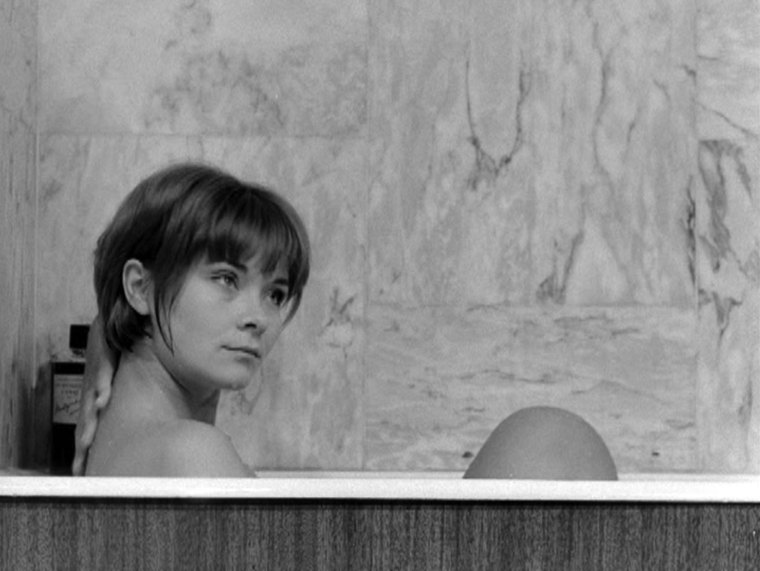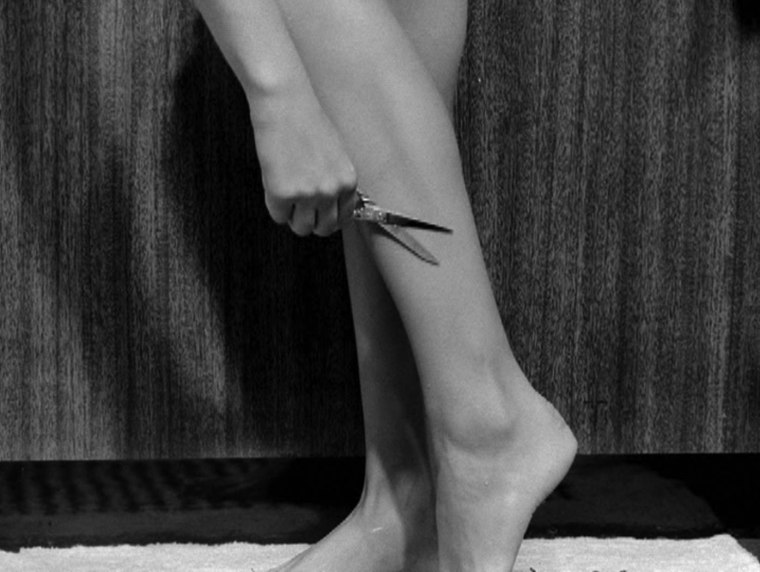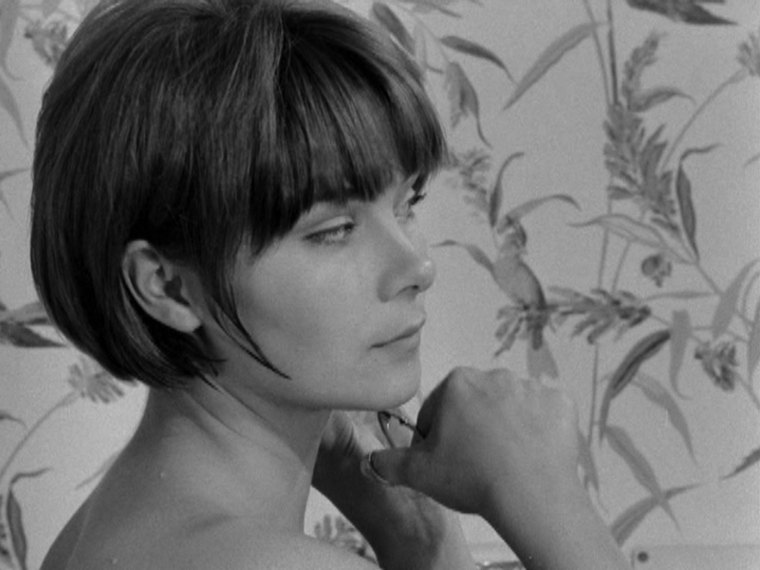Typically one does not go to Godard seeking a spiritual film. Not that his films are devoid of spiritual concerns (his 1985 film Je vous salue, Marie deals directly with spiritual concerns) but Tarkovsky or Bresson or Kieslowski are more typical choices for spiritual cinema. On the other hand, through a different lens as it were, Godard is a very spiritual director, particularly when it comes to his critiques of modern society. On the surface he catalogs – in his own dry humor – the many phenomena of our strange and extravagant late-industrial culture with all of its gaudy materialism, its objects, and its fetishes. And yet are not his characters often living out their new modern spirituality in a sea of things, words, actions, violence, sex, love, books, images, ideas, advertising, and every other signifier of something other? That something other may, in fact, be faith. The question, then, is what is this modern faith?
Godard’s cinema has always been a cinema de jour. His emerges from the endless world of the now. In this age where “God is dead” the drive within each of us for meaning, and finding that meaning in relation to something outside of ourselves, has not gone away. If we find no God we will make one, and as is always the case, we fashion our gods according to our own needs and desires, and in our own image. We then adopt forms of spiritual disciplines that serve our image of God and the imagined requirements of our new spirituality.
What is a spiritual discipline? There are numerous definitions but, in short, a spiritual discipline is a habit or regular pattern of specific actions repeatedly observed in order to bring one into closer relation to God and to what God desires for one to know. It is something one does as an act of devotion and a means of advancement or growth.
How do we see this playing itself out in Godard’s films? In À bout de souffle (1960), a paean to the Hollywood gangster film, Michel exhibits a kind of ritualistic and constant homage to the film gangster archetype, Humphrey Bogart. He goes through the motions, adopts character traits, tropes, stylistic postures, and language to inhabit the ideal of his film hero. His focus and devotion are fundamentally religious, and his actions play out like spiritual disciplines – immature and humorous at times, but spiritual disciplines nonetheless. What Godard gives us in his unique way is a portrait of the spiritual status of French youth in 1960. In a world where traditional religious options fade they are replaced by a new religion, that of the cinema. In the end Michel dies as a martyr to his faith.
In Une femme mariée: Suite de fragments d’un film tourné en 1964 (1964) Godard presents another kind of spirituality, that of the sexual body in a consumeristic world. Although sexuality is one of the oldest “religions” in human history Godard examines it within a thoroughly modern context. Charlotte, who is married to one man and in love with another, is juggling her relationships while gauging herself against the constant inputs she receives (accepts, seeks) from advertising – in particular, advertisements about female beauty and, especially, those pertaining to the ideal bust. Her life becomes a constant calculation of actions – maybe motions is a better word – to present herself both to the world and to herself. She becomes both priestess and offering at the altar of modern woman.
One scene in the film highlights Charlotte’s commitments. Here she is finishing her bath.
She meditates (on what we do not know) with perhaps an intelligent expression, perhaps vacuous. She exits the bath. The camera followers her legs. She dries off.
She then used scissors to trim her leg hair.
Then trims her already carefully coiffed locks.
She then trims her pubic hair.
The camera does not follow the scissors, but we hear them and assume she is not trimming her bellybutton hair.
European films of the 1960s gained a reputation in the U.S. for being risqué. Though tame by today’s standards, to have a woman trim her pubic hair, even if only suggested, would have called attention to itself, and Godard makes sure the camera holds long enough for us to notice. Within the context of the film this shot makes a great deal of sense. Her bathing and grooming, and the calling attention to the details of her actions present to us the actions of her spirituality, her disciplines. This is not a world without a god, rather it is a world of many gods (her husband worships airplanes and is a pilot) and her god is a combination of love, sex, her body, her image as woman, etc. In this quiet moment we are voyeurs to her prayer, to her communion.
More than Godard’s other films of this era Une femme mariée is a highly formalized, stylish, and unusually crafted visual fugue of body parts, actions and gestures, and environments. At times we are drawn toward comparisons with Dreyer’s La Passion de Jeanne d’Arc (1928) for its uncompromising formalism and spiritual quest of its protagonist, and to Resnais’ Hiroshima Mon Amour (1959) also for its formalism, sexuality and the spiritual struggle of its characters in light of nuclear weapons. Godard takes the next step to characterize the spiritual quest of the modern woman (we should included men as well, though that is sometimes debatable with Godard) as neither traditionally religious/Christian or driven by existential terror, rather the new spirituality is a commodity based religion of self-image mediated through the world of late industrial production and consumerism. What makes this work, and elevates the film, is that Godard’s characters do not suffer the anguish of extreme religious piety or existential nihilism, rather they fully inhabit their world as accepting individuals who embrace the proscriptions of their circumstances – like peasants in medieval Europe, like good 20th century bourgeoisie.
In this way Godard stands as one of the more significant artists of the late modern/post-modern period. Later he would take these themes to greater and more political heights with such films as 2 ou 3 choses que je sais d’elle (1967) and Weekend (1967). Godard, though thoroughly materialistic, may also be a more spiritual director than most – a consideration we do not consider enough.





